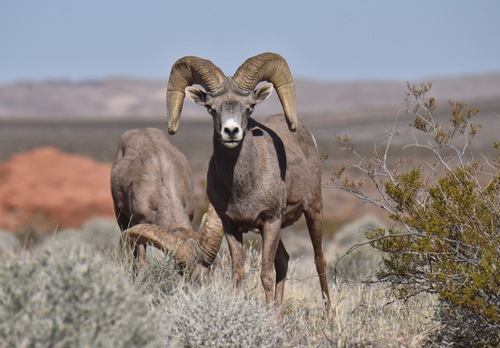
Bighorn Sheep
The bighorn sheep's majestic horns and mountain mastery define its presence in North America's craggy landscapes. Known for head-butting battles and grazing activities, they play a vital role in preserving ecological balance, enriching plant diversity amidst rocky terrains.
10-15 years
Lifespan
34.0 - 143.0 kg
Weight
Length: 1.4 - 2.0 m; Height: 74 - 104 cm
Size
White, Dark, Brown, Grey-Brown
Color
24 months
Age of Sexual Maturity
6 months
Age of Weaning
18 mph
Top Speed
Least Concern
Conservation Status
Stable
Population Trend
Distribution Range of the Bighorn Sheep
Ovis canadensis, commonly known as the bighorn sheep, is native to North America. Its geographical distribution primarily includes the Rocky Mountains, Sierra Nevada, and other mountain ranges of the western United States as well as parts of Canada and northern Mexico.
Bighorn Sheep's Habitat
Environmental Conditions
Bighorn sheep typically inhabit mountainous regions characterized by steep, rugged terrain. They are found in varying elevational ranges, from arid desert mountains and foothills to alpine tundra zones. The climate in these areas can be harsh with cold winters, although desert populations experience significantly warmer and drier conditions.
Ecological Niche
Bighorn sheep are well-adapted to their mountainous environments. They are herbivores that primarily feed on grasses, shrubs, and forbs. Their adaptations include specialized hooves for climbing and jumping on rocky surfaces, as well as acute vision to detect predators. Habitat selection often varies by subspecies and seasonal movements, as some populations migrate between higher elevations in summer and lower elevations in winter.
Copyright @ Nature Style Limited. All Rights Reserved.
 English
English